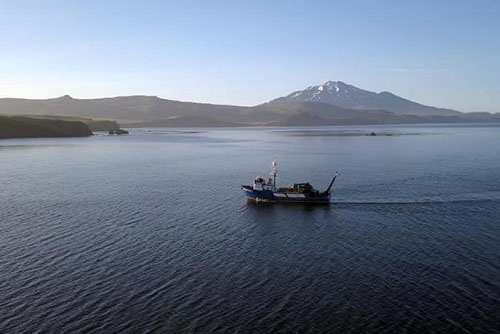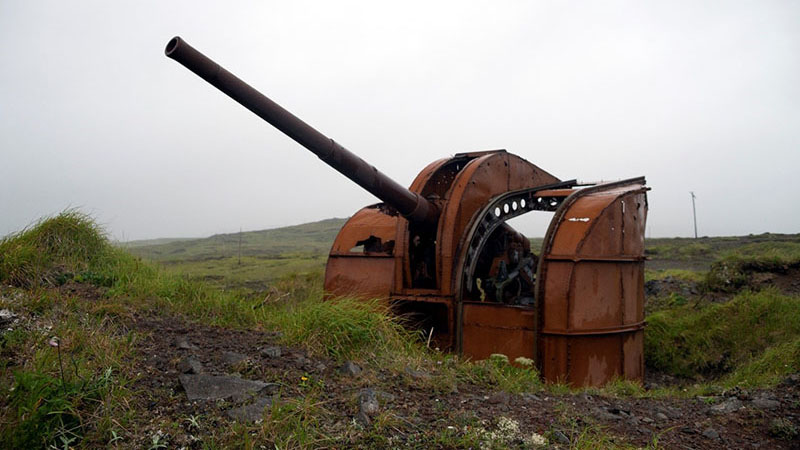
By Kyle McBurnie, Diatom Studios
July 26, 2018
The sea has a way of bending time. She shifts hours into days and days into weeks, but not quite linearly. It feels like we’ve been out here for months, but it also seems like yesterday that we loaded the good ship Norseman II for our voyage. Yet here we are, two weeks later, and as our bow turns downwind and the engine throttles to cruising speed, the motor hums the same song but the feeling is different. It’s the feeling of heading home.

The R/V Norseman II in Kiska Harbor. Image courtesy of the Kiska: Alaska's Underwater Battlefield expedition. Download larger version (jpg, 115 KB).
Though the circumstances may be remarkably different, there is something about returning from a voyage at sea that seems to put sailors in a similar mood. A sort of calm and stillness brought on by an exhaustive lack of sleep coupled with the physical soreness only a boat rocking in the trough can provide. In our case, for the last 14 days, 23 incredibly talented individuals—oceanographers, engineers, Navy personnel, captains, crew, a filmmaker, and an archaeologist—all lived together in close quarters and accomplished something great in an attempt to understand the final moments of individuals who wrecked around this remote island.
There were highs and lows abound, and I’ll re-cap just a few of my favorites:

Late night REMUS recovery. Image courtesy of the Kiska: Alaska's Underwater Battlefield expedition. Download larger version (jpg, 762 KB).

Team members take some time to see the island that contextualizes the survey. Image courtesy of the Kiska: Alaska's Underwater Battlefield expedition. Download larger version (jpg, 1 MB).

120-millimeter anti-aircraft gun on North Head, Kiska Island. Image courtesy of the Kiska: Alaska's Underwater Battlefield expedition. Download larger version (jpg, 673 KB).

A giant Pacific octopus who has made his home on a wreck. Image courtesy of the Kiska: Alaska's Underwater Battlefield expedition. Download larger version (jpg, 618 KB).
As we rock our way back to our home port of Adak, I’m sure everyone has their most memorable highs and lows, but what goes without saying is a mutual appreciation for the sheer amount of hard work it took to run our expedition in such a remote location—and how much harder this would have been in the 1940s. A ship is only as good as her crew, and with the benefit of modern technology and a multi-faceted team with years of experience, we accomplished what we set out to do.
But experience, hard work, and adaptability aren’t always good enough, and sometimes the ocean has a way of deciding a people’s fate for them. For the sailors, submariners, and flight crews of our surveyed wreck sites on Kiska, high seas and World War II stole from them that feeling of ever returning home. Hopefully the surveys we carried out, along with the knowledge and discoveries we are coming back with, can help close that loop—and in some way provide that feeling of coming home, 75 years later, to the families of the individuals who deserve it most.